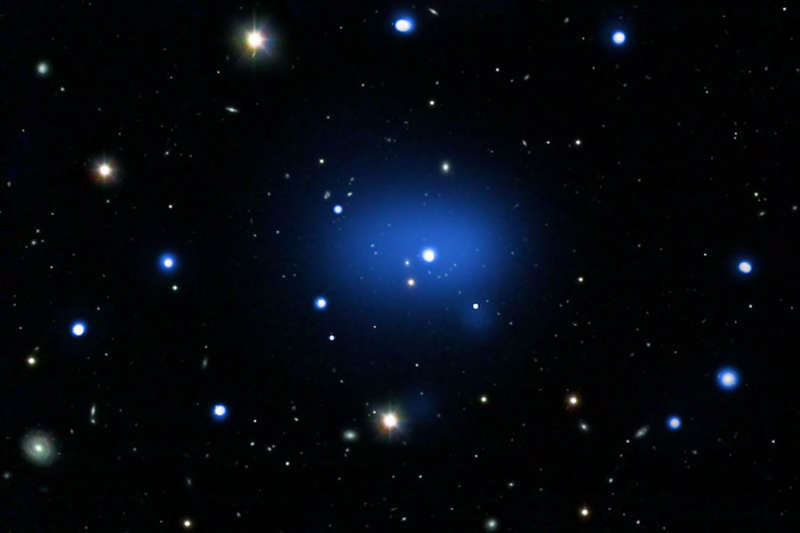Explanation: What if we could see back to the beginning of the universe? We can -- since it takes the age of the universe for light to cross the universe. Peering at distant objects, therefore, tells us about how the universe used to be, even near its beginning. Since telescopes are therefore also time portals, observations of distant clusters can be used, for example, to investigate when and how these huge galaxy conglomerations formed. Previously, the redshift record for a galaxy cluster was about 1.5, corresponding to about nine billion light years distant. Recently, using data including X-ray images from the orbiting Chandra X-Ray Observatory, a new furthest cluster was identified. Shown above, JKCS041 is seen at redshift 1.9, corresponding to nearly one billion light years further than the previous record holder. The hot X-ray gas that confirmed the apparent galaxy grouping as a true cluster of galaxies is shown above in diffuse blue, superposed on an optical image showing many foreground stars. JKCS041 is seen today as it appeared at only one quarter of the present age of the universe.
1999 2000 2001 2002 2003 2004 2005 2006 2007 2008 2009 2010 2011 2012 2013 2014 2015 2016 2017 2018 2019 2020 2021 2022 2023 2024 2025 |
Yanvar' Fevral' Mart Aprel' Mai Iyun' Iyul' Avgust Sentyabr' Oktyabr' Noyabr' Dekabr' |
NASA Web Site Statements, Warnings, and Disclaimers
NASA Official: Jay Norris. Specific rights apply.
A service of: LHEA at NASA / GSFC
& Michigan Tech. U.
|
Publikacii s klyuchevymi slovami:
galaxy cluster - Skoplenie galaktik - dalekie galaktiki - vozrast Vselennoi
Publikacii so slovami: galaxy cluster - Skoplenie galaktik - dalekie galaktiki - vozrast Vselennoi | |
Sm. takzhe:
Vse publikacii na tu zhe temu >> | |
